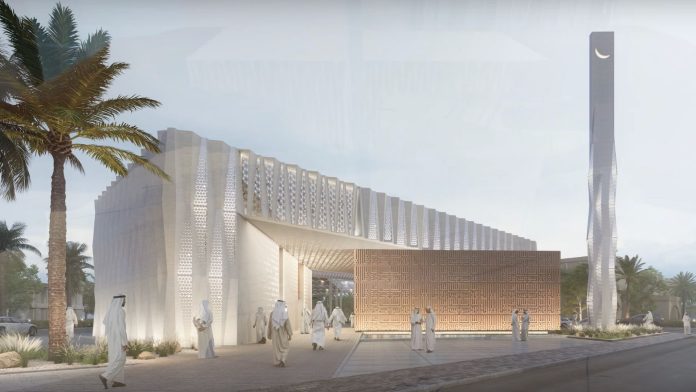Building anything from homes to businesses to bridges has been accomplished in recent years using 3D printing.
Currently, Dubai is planning to build the first 3D-printed mosque. According to Ali Mohammad Alhalyan Alsuwaidi, chief of engineering at the Dubai Government’s Islamic Affairs and Charitable Activities Department (IACAD), the edifice would hold 600 worshippers and span 2,000 square meters over two stories. It will be composed of a concrete mixture, and work is scheduled to start by year’s end and be finished in the first quarter of 2025.
Alhalyan Alsuwaidi said, “We chose to 3D-print the mosque since it’s a new and revolutionary technology that may be able to save time and resources compared to traditional building methods. IACAD declined to disclose the name of the business in charge of the construction.
Large printing machines that have been programmed with the design data are needed to 3D-print buildings. They add layers of construction material to the structure by squeezing it out of a nozzle. Concrete makes up the great majority of constructions that have been 3D printed, however other materials like clay can also be used.
Updating The Construction Sector
Dubai aims to become the global central for 3D printing, and in 2018 it unveiled a “3D Printing Strategy” that called for 25% of the emirate’s new buildings to be made using 3D printing by 2030. The Dubai Municipality building, which stands 9.5 meters tall and covers 640 square meters, was the largest 3D-printed construction in the world as of 2019. It also houses the world’s first 3D-printed office and a 3D-printed drone research lab.
But more and more 3D-printed structures are being constructed all over the world, from refugee housing in Jordan to homeless housing in Austin, Texas, to entire complexes of structures, like the 3,800 square foot (353 square meter) Camp Swift military training Centre, and entire neighborhoods, like the New Story project in Tabasco, Mexico, which will house low-income families. Theo Salet is the dean of Eindhoven University of Technology’s Department of the Built Environment in the Netherlands. He supports using technologies like 3D printing to modernize the construction sector.
“A vast amount of construction work needs to be done in the coming decades, in the context of a lack of skilled construction workers, an energy transition, and a need for the industry to become more sustainable,” said he.
The problem of a scarcity of construction workers will be solved, he continued, and “digital design and construction will save time, reduce construction costs and costs of failures, and allow us to rethink our designs in terms of sustainability.”
He thinks the proposed mosque in Dubai represents the next stage in 3D-printed architectural design, but he also knows it would be difficult. “It is quite a task, of a scale yet unknown, to realize a large and eye-catching project like this,” he remarked. “There is no question that 3D printing will function, but generated designs contain promises that must be (possible) to fulfil in reality… I believe that a project with this scope and ambition should allow for learning and mistakes.


